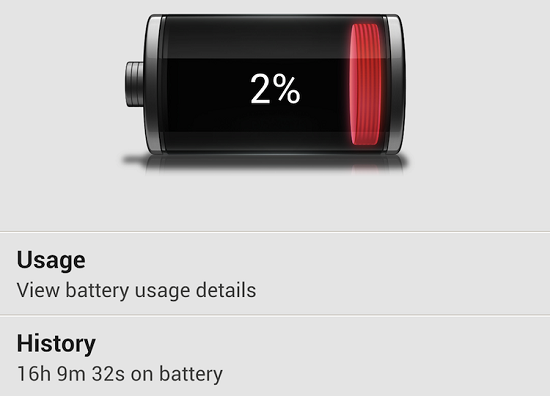
There’s a certain point where we all know we’re preaching to the choir about battery technology. You, me, and just about everyone else who has used a smartphone in their life knows that battery life isn’t as good as it should be. Of course, “should be” is about as relative as anything else out there, especially when it comes to devices that are completely dependent upon how we use them. I think this is something that phone manufacturers cling to, as it gives them the only bit of solace they can look forward to when they design phones with admittedly “small” batteries.
That’s the rub, right? While a majority will probably get the same average battery life, if we break it down to individuals, the likelihood that I’ll get the same life out of my BlackBerry Z10 as someone else with the same phone is pretty slim. Why? Because we use our phones differently, we have different apps on our phones, and we are probably connected to different networks, be it cellular or Wi-Fi, at different intervals in a day.
Over the years, I’ve used devices that have both surprised and disappointed me when it came to battery life. I’ve used devices because I was told that the battery life was amazing, and was ultimately not all that impressed with it. On the other hand, I’ve picked up and used devices knowing that the majority of folks weren’t all that pleased with the battery’s longevity, and came away no worse for wear. All this shows is that battery life is dependent on our own usage.
But what it doesn’t mean is that manufacturers should be taking it easy on developing better, longer-lasting batteries.
We know that there are handsets out there that have big batteries. Batteries that can, for all intents and purposes, last a full day. Handsets like Samsung’s Galaxy Note II or Motorola’s DROID RAZR MAXX HD, for instance. The former’s battery measures in at 3,100mAh; the latter’s measured at 3,300mAh. These handsets are known to last a full day. In fact, I know a lot of people who have been able to go even longer than that, reaching upwards of 18 hours (or longer) on a single charge, and with plenty of usage.
I never had a chance to use the DROID RAZR MAXX HD, but I did manage to spend some time with the Galaxy Note II. My own time with the device saw some pretty mixed results, to be honest. On days that I didn’t use the handset like I normally do, which means not listening to music, I could get plenty of life out of the battery. To be honest, though, I don’t watch a lot of video on my phones (with the exception of a movie trailer here and there), so that’s one battery draining element that I never really implement on a regular basis.

I managed to get just about “normal” amount of battery out of the Galaxy Note II when I was listening to music throughout the day, though. Again, an indicator that a battery will only last as long as we really want it to. If we push the devices, and use intensive applications, whether that pulls on technology from the phone, or from an external network, then the battery is going to drain faster. This is a truth, and one that we’ve had to live with for years.
That’s why we want better battery tech out of our manufacturers. It’s why when we hear about a new phone being launched, we wait to see how big –or small—the battery is going to be. Some folks even focus their purchase plans on whether or not they believe the battery will be able to last a full day.
In my review for the BlackBerry Z10, I mentioned that the battery life wasn’t all that terrible. And in all actuality, it isn’t. I managed to get plenty of life out of the phone, but I wouldn’t call it “all day.” If you plug the Z10 in and start charging it, you’ll be given an option to “drop a shade,” where you can apply an alarm clock if you want, and even silence notifications. I look at this feature in one way:
If manufacturers want us to plug our phones in once, at the end of the day and overnight, why don’t they give us batteries that last that long?
The BlackBerry Z10’s battery is measured at 1,800mAh. So what about upcoming devices? The HTC One’s battery is set at 2,300mAh. The Samsung Galaxy S 4? 2,600mAh. Are we looking at a time where devices are seeing an up-tick in battery size, or life? It doesn’t look like it. I only expect Samsung’s successor to the Galaxy Note II to really show some battery improvements, but even that’s a toss-up at this point (considering it’s an unannounced device and all).
So if our batteries aren’t getting any bigger anytime soon, I want to know from you what you’d be willing to sacrifice to get your hands on a few extra hours out of your battery. Is it something you’d be willing to sacrifice in a new phone, like a display with fewer pixels, maybe? No more 1080p displays, by chance? Or how about a dual-core processor, instead of a quad-core?
Or maybe it’s something you are already sacrificing, to eke out a bit more life for your phone. Sticking to a Wi-Fi connection as much as possible? Or maybe you never turn on your GPS, or Bluetooth? Keep your display’s brightness turned as low as possible? I want to know what you’d be willing to give up in a future phone to ensure better battery life, if manufacturers won’t give us the batteries we are so vocal about. And what do you do now to make your phone get through the day? Let me know!
image via iFixIt